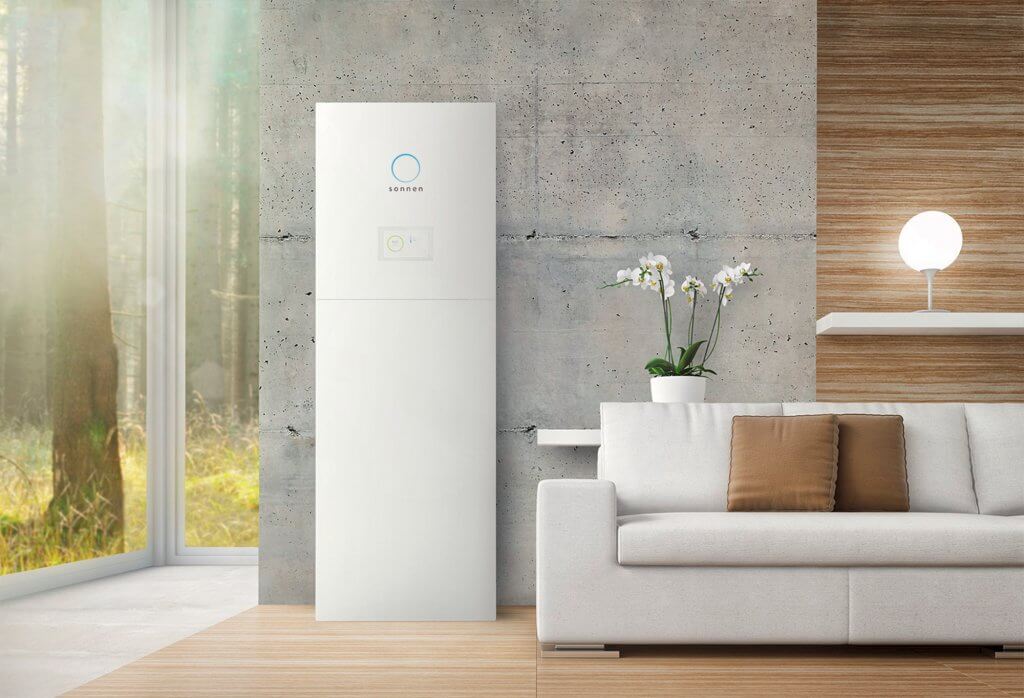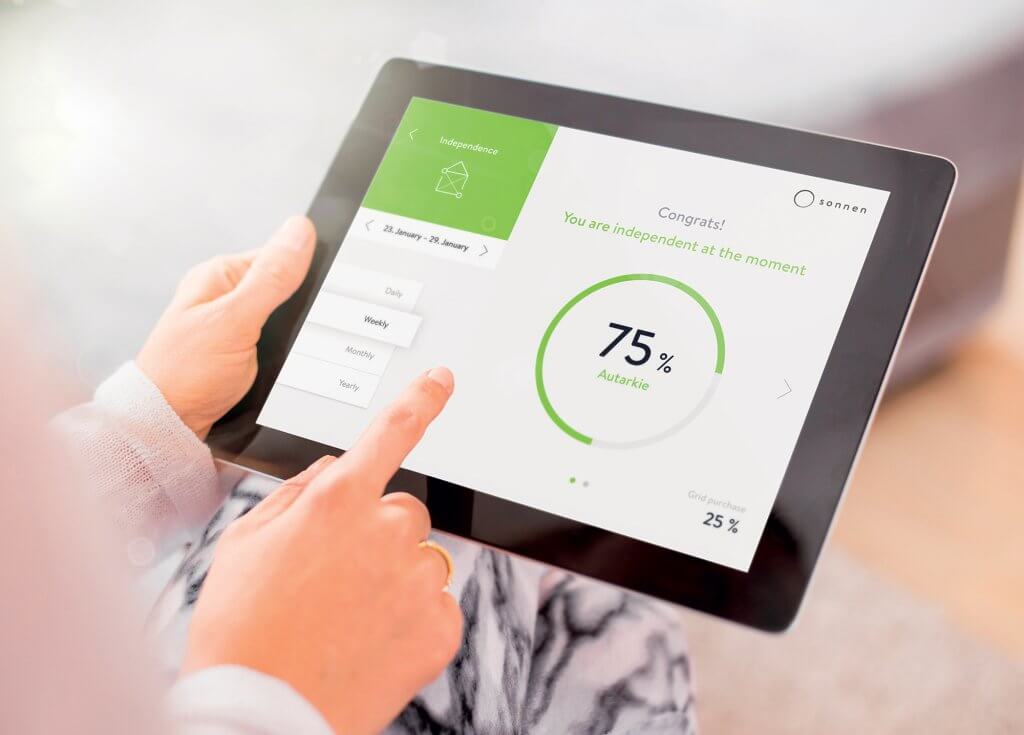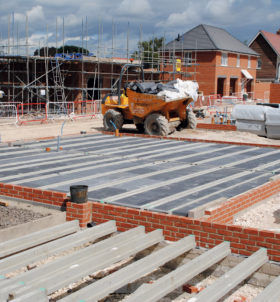

Solar battery storage is designed to store the electricity your panels generate during the daytime, in order to use it later in the day or overnight. This can help you to make the most of renewable electricity and reduce your reliance on grid-based power.
Solar electric panels are a popular technology with self builders and renovators. Fundamentally, they transform daylight into useable energy – the idea being that you get to take advantage of a free renewable resource, and in doing so reduce your utility bills.
Greater UK uptake of solar panels was partially driven by the Feed In Tariff (FIT), which was introduced in 2010. The FIT paid out quarterly for every kilowatt-hour (kWh) of electricity a qualifying solar photovoltaic (PV) installation generates, making solar a fantastic investment.
However, the FIT has now closed to new applicants – making the financial incentive to installer solar pv panels less clearcut than it once was. The government has replaced it with a much less generous Smart Export Guarantee (SEG), which is available from some electricity suppliers and provides a payment for any energy you export back to the national grid.
The most cost-effective way to use solar pv electricity, however, is to consume as much of it onsite yourself to reduce the need to buy electricity from the national grid.
Unfortunately, it’s not always easy to make optimum use of solar-generated electricity – for reasons we’ll explore in a moment. This has led to a proliferation of research into solar battery storage solutions that aim to help you maximise solar resource.
The technology is developing rapidly but is still relatively new. So, are solar batteries worth considering for your home?
Browse: Find the right renewable energy products for your project
The crux of the issue is that even the best solar panels can only generate power during daylight hours (and effectively only when the sun is well above the horizon). Cloud cover also reduces output substantially, and in winter the amount of electricity you can produce is very low.
What this means is that power isn’t produced when domestic demand for electricity is at its highest – ie in the morning, in the evening and during winter. Unless you’re at home on a bright day when there’s a good sunlight resource, and you are using the solar pv panels to run washing machines or other electrical appliances, you may not be able to take direct advantage of the power you’re generating.
A significant proportion of solar PV output would therefore be exported to the national grid. In the past, you would have received a FIT payment for all the electricity you generated, plus a further payment for the energy you sent to the grid. But, as we’ve mentioned, the FIT has now been withdrawn to new applications.
The Feed-In-Tariff has been replaced by the SEG (Smart Export Guarantee), which is currently available from around a dozen UK suppliers and pays out only on exported electricity.
At the time of writing, SEG export tariffs are anything from 1p/kWh through to 15p/kWh depending on supplier and setup. Some suppliers provide a better SEG rate if you have a solar battery installed.


Obviously, the more of your home-generated electricity you can use on site, the less you’ll have to draw from the grid. Under the Energy Price Cap, the average unit price per kilowatt-hour of electricity is currently around 30 pence (30p/kWh).
So, the more solar PV electricity you can use at home, rather than selling it and buying back from the national grid, the lower your electricity bills will be. One way of increasing your usage of PV energy is to install solar battery storage.
The timing mismatch between electricity demand and PV supply can be partly addressed through the use of battery storage. Instead of exporting the excess to the national grid, you can stockpile the power on site and use it in the evening and at night, when the panels aren’t generating.
Solar battery storage systems can be supplied as part of a new PV installation, or retrofitted to existing setups. They are available in AC and DC formats, depending on which point in the system they’re hooked into (basically, AC is used after the PV’s inverter; DC before the inverter).
Source it: The Tesla Powerwall 2 can help you make the most of your renewable energy
Solar batteries are rated in terms of how many kWh of energy they can store. Domestic versions range in capacity from 2kWh to 14kWh.
How you use the electricity is also important.
If your main consumption at night is short bursts of high power uses, such as kettles or electric showers, then a battery with a low output won’t reduce your grid demand that much. But it will still supply devices with a smaller power demand, such as fridges or lighting.
Battery technology has improved recently. The old lead-acid versions were cheap but they tended not to last for long and were inefficient. Lithium-ion is the now the norm in many battery storage applications (including PV systems), and has greatly increased efficiency.
The underlying technology isn’t likely to change much in the medium term; so it looks like lithium-ion batteries are here to stay.
In financial terms, calculating whether solar pv battery storage is worth the money is all about comparing the upfront cost of the battery with the savings it provides.
Of course, adding storage technology to a PV system will only reduce electricity bills for the lifetime of the battery. Most solar battery systems are warranted for a period of five or 10 years.
Some manufacturers also warrant their batteries for a fixed number of cycles (a complete charge up and discharge of the unit). Others work on the basis of a specified number of kWh that will be delivered under the warranty.
To figure out whether investing in a system is worthwhile, let’s look at a simple example. If a battery storage system is expected to deliver 40,000kWh, then based on an electricity price of 30p/kWh you would expect that fitting it would save you a total of £12,000 over its warranted lifetime (40,000 x 15 / 100).
The average solar battery install in the UK currently costs around £6,000-£10,000. So, on that basis, you should be able to make savings with a well-specified and properly installed solar battery storage system. Check out Naked Solar for an interesting overview of how different systems compare on costs and savings.
For those of you wanting to make your home’s more sustainable, it’s worth bearing in mind you would also be consuming more of the earth’s resources by putting in a solar battery system.
Of course, solar batteries may last for longer than the warranted number of kilowatt-hours. If so, this would improve the economic and environmental payback. Similarly, the cost of battery installation may come down and further improve payback.
However, we don’t yet have robust data on battery life that would allow us to make decisive calculations. So while battery costs have come down recently, it’s not yet clear-cut that they will deliver a saving (unless you’re totally off-grid).
Battery storage may make more economic sense if you have a definite use for any excess power, such as to supply an electric car. Surplus energy generated during the daytime could be used to recharge the vehicle overnight, eliminating exports completely and reducing your need for power from the grid.
However, a large system would be needed to capture all the available energy and store it without exporting any power – and the bigger the battery, the greater the expense and environmental impact.
Even the largest domestic setups in common use only have a storage capacity of 14kWh at most (the majority have much less). If you were using the battery to charge an electric car at night, 14kWh at 30p/kWh would save you £4.20 off your daily charging bill. This is assuming that the PV storage has fully recharged the battery during the day and that no energy has been used elsewhere in the house; so in reality you’re unlikely to achieve that level of payback.
Bear in mind that in winter, a 4kWp solar PV system may not be able to supply the required 14kWh, while in summer the panels may generate more energy than the battery can store. So you can’t simply multiply £4.20 by 365 days to work out what your annual saving would be.
It takes energy and raw materials to build, transport, install and maintain any renewable generation system (known as embodied energy). Research indicates that repaying the energy cost of manufacturing and installing a small PV system in mid-Europe (the location matters, because latitude determines solar output) will take between three and four years. Some estimates are higher than this.
The end-of-life impacts must also be considered. Some rare and toxic materials are used in the production of solar electric panels. Research is only now being carried out on how spent PV modules should be recycled at the end of their useful life.
The impact of recycling is generally excluded from current calculations of energy payback periods, as is the impact of reconditioning or replacing the inverter (which is likely to be needed at least once over the array’s lifetime).
Investing in batteries will add to the environmental impact of your installation, of course – especially as they are not expected to last as long as the panels themselves. That said, the lithium ion technology currently used is much less toxic than lead-acid, and the units themselves are more compact, which makes them easier to transport.
Even if you have solar PV installed at your home, in most cases you will still need a connection to the national grid to provide energy in the evenings, early mornings and at other times when the sun’s not shining strongly.
Battery storage can help to reduce your dependency on conventional power. It can also assist you in making better use of the solar supply, for instance by allowing you to run appliances overnight using your site-generated electricity.
It’s important to note that the majority of the benefit from battery storage will be felt in summertime. It doesn’t solve the problem that, during winter, most domestic solar PV arrays simply won’t be able to cope with a family’s energy demand over a seven-day period.
However, battery storage is a developing technology – both in terms of on site generation and large-scale grid supply – and there will undoubtedly be further innovation to come.
Top image: Tesla’s Powerwall 2 can be floor or wall mounted, and is suitable for installation both indoors and out. Multiple batteries can be used in tandem to suit households with a high power demand. It also features an internal inverter to simplify installation. Find out more

